
Brain Tumor Pathology
Scope & Guideline
Illuminating the path to better brain tumor treatments.
Introduction
Aims and Scopes
- Pathological and Molecular Characterization:
The journal emphasizes the importance of understanding the histopathological and molecular features of brain tumors, including genetic mutations, protein expressions, and their implications for diagnosis and treatment. - Clinical Insights and Case Studies:
It includes extensive case reports and reviews that provide clinical insights into rare and complex brain tumor presentations, thereby enhancing the understanding of these tumors in a clinical context. - Translational Research:
A significant focus is placed on translational research that bridges laboratory findings with clinical applications, particularly in developing new diagnostic tools and therapeutic strategies. - Emerging Tumor Types and Classifications:
The journal is dedicated to exploring emerging tumor types and evolving classification systems, aligning with the latest updates from international guidelines such as the WHO classification. - Immunological and Microenvironmental Studies:
Research on the tumor microenvironment and the role of immune cells in brain tumors is a core area, highlighting the interplay between tumors and the immune system.
Trending and Emerging
- Genomic and Molecular Profiling:
There is an increasing trend towards comprehensive genomic and molecular profiling of brain tumors, which aids in understanding tumor biology, guiding treatment decisions, and improving patient outcomes. - Liquid Biopsy Techniques:
The emergence of liquid biopsy as a non-invasive diagnostic tool is gaining traction, providing valuable insights into tumor dynamics and potential therapeutic responses. - Immunotherapy and Immune Profiling:
Research focusing on immunotherapy and the profiling of immune responses within the tumor microenvironment is expanding, highlighting the importance of immune interactions in tumor progression and treatment. - Novel Therapeutic Strategies:
The exploration of novel combination therapies and targeted treatments, particularly those integrating molecularly targeted agents and immunotherapy, is becoming increasingly prevalent. - Impact of Molecular Alterations on Treatment Outcomes:
There is a growing emphasis on understanding how specific molecular alterations influence treatment responses and prognostic outcomes, which is critical for personalized medicine.
Declining or Waning
- Traditional Histopathological Methods:
There seems to be a decreasing emphasis on traditional histopathological methods alone, as the field shifts towards more integrated approaches that combine molecular and genomic analyses for tumor classification and diagnosis. - Older Classification Systems:
The reliance on older classification systems is diminishing, especially with the introduction of newer WHO classifications and molecular subtyping methods that better reflect the complexities of brain tumors. - Single Modality Treatment Approaches:
There is a noticeable reduction in research focusing solely on single modality treatment approaches, as the field increasingly favors combination therapies and personalized medicine strategies. - Focus on Low-Grade Tumors:
Research on low-grade tumors appears to be less prominent compared to high-grade tumors, as the latter often attract more attention due to their aggressive nature and immediate clinical relevance.
Similar Journals
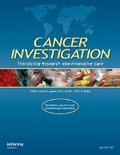
CANCER INVESTIGATION
Advancing cancer research, one investigation at a time.CANCER INVESTIGATION is a distinguished peer-reviewed journal published by Taylor & Francis Inc, dedicated to the advancing field of cancer research and oncology. With an ISSN of 0735-7907 and E-ISSN of 1532-4192, this journal has been a pivotal resource for professionals and researchers since its inception in 1983, continually contributing to the evolving landscape of cancer investigation until its convergence in 2024. CANCER INVESTIGATION boasts noteworthy rankings in 2023, including Q3 in Cancer Research and Q2 in Medicine (miscellaneous), highlighting its relevance and impact in these critical areas. The journal's commitment to disseminating innovative research and comprehensive reviews makes it an essential platform for those engaged in cancer studies and related disciplines. While currently not available as an open-access publication, CANCER INVESTIGATION remains an invaluable tool for understanding the complexities of cancer, offering insights that drive scientific advancements and improve patient outcomes.

Chinese Journal of Cancer Research
Advancing cancer research for a healthier tomorrow.Chinese Journal of Cancer Research, published by Chinese Journal Cancer Research Co, is a pivotal platform for disseminating significant findings in the field of oncology. Since its inception in 1988, the journal has provided a comprehensive forum for cancer research, featuring peer-reviewed articles that cover various aspects of cancer biology, prevention, diagnosis, and treatment. Although the journal's coverage is currently discontinued in Scopus and holds an HIndex that has not been specified, it is ranked in the 65th percentile in Medicine - Oncology and the 48th percentile in Biochemistry, Genetics and Molecular Biology - Cancer Research. This reflects its commitment to maintaining quality and relevance in the rapidly evolving field of cancer research. Researchers, professionals, and students are encouraged to explore its rich archive of studies and breakthroughs to enhance their understanding and further their research. For access, the publication remains instrumental for those invested in advancing the global fight against cancer.
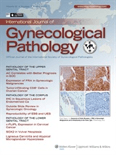
INTERNATIONAL JOURNAL OF GYNECOLOGICAL PATHOLOGY
Elevating standards in gynecological pathology research.INTERNATIONAL JOURNAL OF GYNECOLOGICAL PATHOLOGY, published by Lippincott Williams & Wilkins, is a premier academic journal dedicated to the intricate field of gynecological pathology, serving a critical role in advancing the understanding of diseases related to women's reproductive health. Since its inception in 1982, this journal has established itself as a key resource for researchers, clinicians, and students, with a current impact factor that reflects its esteemed reputation; it is ranked in the Q2 category for both Obstetrics and Gynecology, as well as Pathology and Forensic Medicine, signifying its prominence in academic circles. The journal's scope encompasses a wide array of topics, including histopathological findings, diagnostic methodologies, and evolving therapeutic strategies, all pivotal to enhancing patient care. With a steadfast commitment to disseminating high-quality research until the projected year of 2024, the INTERNATIONAL JOURNAL OF GYNECOLOGICAL PATHOLOGY is an essential read for those looking to stay abreast of the latest developments in this vital area of medical science.
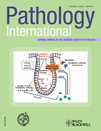
PATHOLOGY INTERNATIONAL
Advancing the Boundaries of Pathology and Forensic MedicinePATHOLOGY INTERNATIONAL, published by WILEY, stands as a distinguished journal in the field of pathology and forensic medicine, serving as an essential resource for researchers, clinicians, and students alike. With its ISSN 1320-5463 and E-ISSN 1440-1827, PATHOLOGY INTERNATIONAL has established itself since its inception in 1951, navigating through an evolving landscape in medical science with insights and breakthroughs up to 2024. It holds a commendable Q2 ranking in both the Medicine (miscellaneous) and Pathology and Forensic Medicine categories, indicating its robust influence and quality within these fields, as evidenced by its placement in the 70th percentile of Scopus rankings. While currently not an open-access journal, it provides access options that ensure valuable research remains available to the academic community. PATHOLOGY INTERNATIONAL commits to advancing the discipline through pioneering research articles, comprehensive reviews, and expert opinions that push the boundaries of understanding in pathology, thereby supporting the enhancement of diagnostic and therapeutic practices.
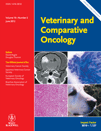
Veterinary and Comparative Oncology
Pioneering insights in veterinary oncology and comparative medicine.Veterinary and Comparative Oncology is a leading academic journal published by WILEY, providing a vital platform for the dissemination of groundbreaking research in the field of veterinary oncology. With an impressive impact factor and ranked as Q1 in the Veterinary (Miscellaneous) category for 2023, the journal is recognized for its quality and influence, placing it in the top 10% of its field. Covering a wide array of topics, from the pathogenesis of tumors in animals to innovative treatment strategies, it aims to enhance the understanding of cancer biology and therapy in veterinary medicine. The journal has an E-ISSN of 1476-5829, with its scope expanding from 2007 to 2024, reflecting an ongoing commitment to the advancement of veterinary science. Located in the United Kingdom, its global reach facilitates the exchange of knowledge among researchers, professionals, and students. For those interested in significant and impactful studies, Veterinary and Comparative Oncology remains an essential resource in the ever-evolving landscape of veterinary medicine.

ENDOCRINE PATHOLOGY
Advancing the Future of Endocrine ResearchENDOCRINE PATHOLOGY is a premier journal published by HUMANA PRESS INC, dedicated to advancing the understanding of endocrine disorders through innovative research and clinical practices. With an impressive impact factor and consistently ranked in the Q1 quartile across multiple categories such as Endocrinology, Diabetes and Metabolism, as well as Pathology and Forensic Medicine, this journal serves as a pivotal resource for researchers and professionals in the field. The journal covers a broad spectrum of topics related to endocrine pathology, providing insights into mechanisms, diagnostics, and therapeutics that inform both clinical and laboratory practices. Although it does not offer open access, its rigorous peer-review process ensures the dissemination of high-quality, impactful research that shapes clinical strategies and enhances patient care. With distribution spanning from its inception in 1990 to 2024, ENDOCRINE PATHOLOGY stands at the forefront of endocrine research, making it an essential read for anyone involved in the study and treatment of endocrine disorders.
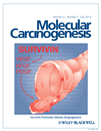
MOLECULAR CARCINOGENESIS
Decoding the Pathways of Cancer DevelopmentMOLECULAR CARCINOGENESIS is a prestigious academic journal published by Wiley, dedicated to advancing the understanding of the molecular basis of cancer. Established in 1988, this journal serves as a vital resource for researchers and professionals in the fields of cancer research and molecular biology. With an impressive impact factor reflecting its significance in the Q2 category for both Cancer Research and Molecular Biology, it stands out for its high-quality, peer-reviewed articles that explore innovative research, novel findings, and emerging trends in carcinogenesis. Although the journal currently does not offer open access options, it remains accessible to the academic community through numerous institutional subscriptions. Positioned in the United States and contributing to the global discourse on cancer research, MOLECULAR CARCINOGENESIS is an essential publication for anyone engaged in the study of cancer at the molecular level.

APPLIED IMMUNOHISTOCHEMISTRY & MOLECULAR MORPHOLOGY
Bridging the gap between theory and practice in immunohistochemistry.Applied Immunohistochemistry & Molecular Morphology, published by Lippincott Williams & Wilkins, stands as a pivotal resource within the fields of histology, medical laboratory technology, and pathology. With an ISSN of 1541-2016 and an E-ISSN of 1533-4058, this journal has been contributing significant research and advancements since its inception in 1996. It serves a diverse audience, including researchers, professionals, and students, aiming to enhance the understanding of immunohistochemical techniques and molecular morphology. Recognized for its quality, it holds category quartiles of Q3 in histology and Q2 in medical laboratory technology and pathology and forensic medicine as of 2023. The journal's rigorous peer-review process ensures that only the most impactful findings are disseminated, thus advancing the education and practice in these critical domains of study. Though it is not an open-access journal, it remains essential for keeping abreast of the latest methodological innovations and applications in pathology and laboratory science, as evidenced by its respectable Scopus rankings and the continual convergence of groundbreaking research published through 2024.
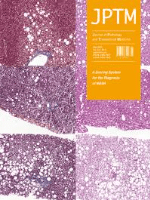
Journal of Pathology and Translational Medicine
Exploring Innovations in Clinical and Theoretical PathologyThe Journal of Pathology and Translational Medicine, published by the Korean Society of Pathologists, is a distinguished peer-reviewed Open Access journal that has been at the forefront of advancing the field of pathology and histology since its inception in 1985. With an established ISSN of 2383-7837 and an E-ISSN of 2383-7845, the journal serves as a vital platform for disseminating high-quality research, fostering collaboration among professionals and offering valuable insights into both clinical applications and theoretical advancements. Recognized for its influence in the field, it holds a commendable Q2 ranking in both Histology and Pathology & Forensic Medicine categories in 2023, and ranks #52/208 in Scopus for Medicine – Pathology and Forensic Medicine, demonstrating its impact and reach within the academic community. Located in South Korea at 1209 Gwanghwamun Officia, 92 Saemunan-ro, Jongno-gu, Seoul 03186, this journal not only caters to researchers and professionals but also supports students striving to deepen their understanding of pathology. Join the growing body of knowledge and stay updated with the latest findings in this essential field of study through the journal's open access format, promoting worldwide accessibility and engagement.
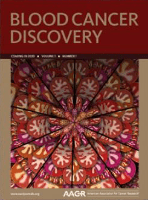
Blood Cancer Discovery
Fostering a Global Dialogue on Hematologic AdvancementsBlood Cancer Discovery is a premier academic journal published by the American Association for Cancer Research, dedicated to advancing the understanding of hematologic malignancies through cutting-edge research in the fields of oncology, biochemistry, and molecular biology. With an impressive impact factor and recognition as a Q1 journal across multiple disciplines, including cancer research and hematology, Blood Cancer Discovery serves as an essential platform for scholars and practitioners alike, facilitating impactful discourse and dissemination of pioneering findings. This open-access journal, established within the vibrant academic landscape of the United States, aims to bridge gaps in research and foster collaborations to ultimately enhance patient outcomes. Its Scopus rankings demonstrate its vital role in the critical advancement of cancer research and therapeutic development. By inviting contributions from a diverse range of disciplines, Blood Cancer Discovery is poised to drive innovation and inspire future advancements in understanding blood cancers.